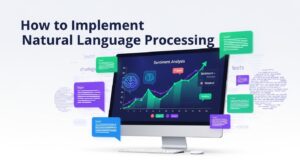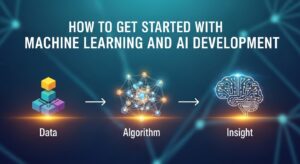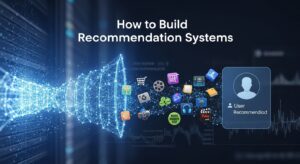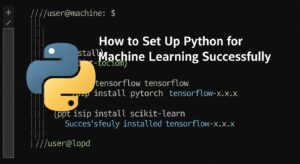Creating predictive analytics models has become a cornerstone of modern business strategy. Organizations across industries are leveraging these powerful tools to forecast trends, optimize operations, and make data-driven decisions that drive competitive advantage.
This comprehensive guide will walk you through the essential steps to build effective predictive analytics models, from initial data collection to final deployment and monitoring.
Understanding Predictive Analytics Models
Predictive analytics models are sophisticated statistical and machine learning algorithms that analyze historical data to identify patterns and make predictions about future events. These models process vast amounts of information to uncover hidden relationships and generate actionable insights.
The power of predictive analytics lies in its ability to transform raw data into strategic intelligence. Companies use these models for various applications including customer behavior prediction, demand forecasting, risk assessment, and fraud detection.
Step 1: Define Your Business Objectives and Use Cases
Before diving into data collection and model building, you must clearly define what you want to achieve with your predictive analytics models. This foundational step determines every subsequent decision in your modeling process.
Identifying Key Business Questions
Start by identifying specific business questions you want to answer. These might include:
- Which customers are most likely to churn next quarter?
- What will be the demand for specific products next month?
- Which transactions have the highest fraud risk?
- How can we optimize pricing strategies?
Setting Measurable Goals
Establish clear, measurable objectives for your predictive analytics models. Define success metrics such as accuracy rates, precision, recall, or business impact measures like revenue increase or cost reduction.
Consider the following framework for goal setting:
Objective Type | Example Metric | Target Value |
Accuracy | Model Precision | >85% |
Business Impact | Revenue Increase | 15% |
Operational | Processing Time | <2 seconds |
Risk Reduction | False Positives | <5% |
Step 2: Collect and Prepare High-Quality Data
Data quality is the foundation of successful predictive analytics models. Poor data leads to unreliable predictions and flawed business decisions.
Data Collection Strategies
Gather data from multiple sources to create a comprehensive dataset. Common data sources include:
- Internal databases and CRM systems
- Web analytics and user behavior data
- External market data and economic indicators
- Social media and sentiment data
- IoT sensors and real-time feeds
Data Cleaning and Preprocessing
Raw data typically contains inconsistencies, missing values, and outliers that can compromise model performance. Implement these preprocessing steps:
- Missing Value Treatment: Use appropriate techniques like mean imputation, forward filling, or sophisticated methods like Multiple Imputation by Chained Equations (MICE).
- Outlier Detection: Identify and handle outliers using statistical methods such as the IQR method or Z-score analysis.
- Feature Engineering: Create new variables that better capture relationships in your data. This might involve creating interaction terms, polynomial features, or time-based variables.
- Data Normalization: Scale numerical features to ensure all variables contribute equally to model training.
Step 3: Select and Implement Machine Learning Algorithms
Choosing the right algorithm is crucial for building effective predictive analytics models. Different algorithms excel at different types of problems and data characteristics.
Algorithm Selection Guidelines
Consider these factors when selecting algorithms:
- Problem Type: Classification, regression, or clustering
- Data Size: Some algorithms work better with large datasets
- Interpretability: Business requirements for model transparency
- Performance Requirements: Speed vs. accuracy trade-offs
Popular Algorithms for Predictive Analytics
- Linear and Logistic Regression: Excellent starting points offering high interpretability and good performance on linearly separable data.
- Decision Trees and Random Forests: Handle both numerical and categorical data well, providing good interpretability and handling non-linear relationships.
- Gradient Boosting Methods: XGBoost, LightGBM, and CatBoost often deliver superior performance in competitions and real-world applications.
- Neural Networks: Deep learning models excel with large datasets and complex pattern recognition tasks.
- Support Vector Machines: Effective for high-dimensional data and when you have limited training samples.
Implementation Best Practices
Start with simpler algorithms before moving to complex ones. Simple models often perform surprisingly well and provide better interpretability for business stakeholders.
Use cross-validation techniques to ensure your predictive analytics models generalize well to unseen data. Implement k-fold cross-validation or time-series cross-validation for temporal data.
Step 4: Validate and Optimize Model Performance
Model validation ensures your predictive analytics models will perform reliably in production environments.
Validation Techniques
- Train-Test Split: Reserve 20-30% of your data for final testing, never using this data during model development.
- Cross-Validation: Use techniques like k-fold cross-validation to get robust performance estimates during model development.
- Time-Series Validation: For temporal data, use forward chaining or rolling window validation to respect the time order.
Performance Metrics
Choose appropriate metrics based on your business objectives:
- Classification: Accuracy, Precision, Recall, F1-Score, AUC-ROC
- Regression: MAE, RMSE, MAPE, R-squared
- Business Metrics: ROI, conversion rates, customer lifetime value
Hyperparameter Optimization
Fine-tune your models using techniques like:
- Grid Search: Exhaustive search over parameter combinations
- Random Search: More efficient for high-dimensional parameter spaces
- Bayesian Optimization: Intelligent search using probabilistic models
- Automated ML: Tools like AutoML can automate the optimization process
Step 5: Deploy and Monitor Your Models
Successful deployment of predictive analytics models requires careful planning and ongoing monitoring.
Deployment Strategies
- Batch Prediction: Process data in scheduled batches, suitable for regular reporting and planning tasks.
- Real-Time Prediction: Provide instant predictions through APIs, essential for fraud detection and recommendation systems.
- Edge Deployment: Deploy models on edge devices for low-latency applications.
Model Monitoring and Maintenance
Implement comprehensive monitoring systems to track:
- Model Performance: Monitor accuracy metrics and alert when performance degrades
- Data Drift: Track changes in input data distributions
- Prediction Drift: Monitor changes in model output patterns
- Business Impact: Measure actual business outcomes against predictions
Create automated retraining pipelines to keep your predictive analytics models current with changing data patterns.
Advanced Techniques for Better Models
Ensemble Methods
Combine multiple models to improve prediction accuracy and robustness. Popular ensemble techniques include:
- Voting: Combine predictions from multiple algorithms
- Stacking: Train a meta-model to combine base model predictions
- Blending: Simple weighted average of model predictions
Feature Selection and Engineering
Advanced feature engineering can significantly improve model performance:
- Automated Feature Selection: Use techniques like Recursive Feature Elimination
- Feature Importance: Leverage tree-based models to identify key variables
- Domain-Specific Features: Create features based on business knowledge
Tools and Technologies for Predictive Analytics
Modern predictive analytics models benefit from a rich ecosystem of tools and platforms:
- Programming Languages: Python and R remain the most popular choices, offering extensive libraries for machine learning and data analysis.
- Cloud Platforms: AWS SageMaker, Google Cloud AI Platform, and Azure Machine Learning provide scalable infrastructure for model development and deployment.
- Visualization Tools: Tableau, Power BI, and open-source alternatives help communicate model insights to stakeholders.
- MLOps Platforms: Tools like MLflow, Kubeflow, and DataRobot streamline the machine learning lifecycle.
Common Pitfalls and How to Avoid Them
- Data Leakage: Ensure your training data doesn’t contain information from the future or target variable. This is particularly important in time-series forecasting.
- Overfitting: Build models that generalize well by using proper validation techniques, regularization, and avoiding overly complex models relative to your dataset size.
- Bias and Fairness: Regularly audit your predictive analytics models for bias, especially when making decisions affecting people. Implement fairness constraints and diverse testing scenarios.
Measuring Business Impact
Track the real-world performance of your predictive analytics models:
- Revenue Impact: Measure direct financial benefits from better predictions
- Cost Savings: Calculate operational efficiencies and reduced manual work
- Decision Quality: Track improvement in business decision accuracy
- Customer Experience: Monitor improvements in customer satisfaction and retention
Future Trends in Predictive Analytics
The field of predictive analytics continues evolving rapidly. Key trends include:
- Automated Machine Learning (AutoML): Democratizing access to advanced modeling techniques through automation.
- Explainable AI: Increasing focus on model interpretability and transparency for business stakeholders.
- Real-Time Analytics: Growing demand for instant predictions and streaming data processing.
- Edge Computing: Deploying models closer to data sources for reduced latency and improved privacy.
Conclusion
Building effective predictive analytics models requires a systematic approach combining technical expertise with business acumen. By following these five essential steps – defining objectives, preparing quality data, selecting appropriate algorithms, validating performance, and deploying with monitoring – you can create models that deliver real business value.
Success in predictive analytics comes from iteration and continuous improvement. Start with simple models, validate rigorously, and gradually increase complexity as you gain confidence and expertise.
The investment in building robust predictive analytics models pays dividends through improved decision-making, operational efficiency, and competitive advantage. Organizations that master these techniques position themselves to thrive in an increasingly data-driven business environment.
Predictive analytics is as much about asking the right questions as it is about technical implementation. Focus on solving real business problems, maintain high data quality standards, and always validate your models against real-world outcomes.
For additional resources on advanced machine learning techniques, consider exploring the scikit-learn documentation and Kaggle’s machine learning courses to deepen your expertise in predictive analytics models.











